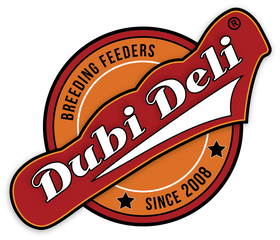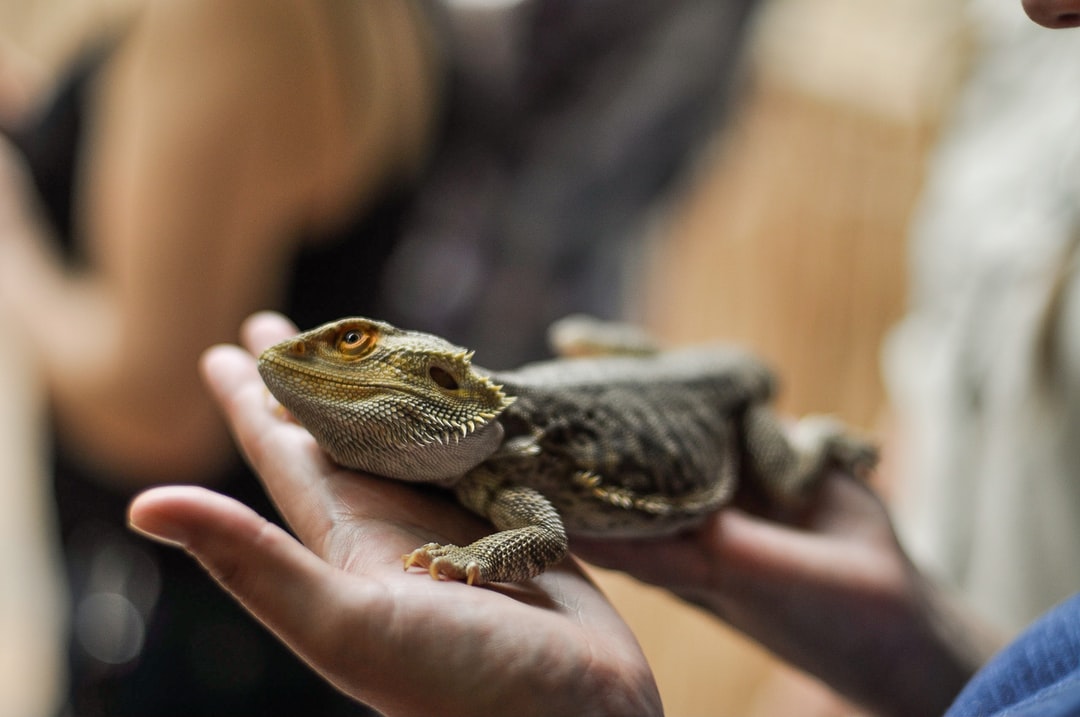Did you know that of the reptile species in the world, only about five percent of them are venomous?
Reptile keepers proudly own a variety of species and learn how to tell when these familiar, friendly faces are thriving and happy. While they may encounter situations in which they need additional reptile food or have questions about the food their pet reptile is getting, they trust the staff at their local pet stores.
You may be considering making a pretty huge commitment to add a pet reptile to your family. But it's not one you should take lightly, so research and preparation are key. But do you know what types of questions you should ask so your perfect lizard, snake, turtle, or frog gets the right type of food?
Your reptile companion needs certain things to eat, but understanding reptile food can seem like a challenge at first. Reptile food can be different from what you are used to purchasing, and sometimes exotic food can be difficult to locate.
Read on to learn more about different types of reptiles, reptile food, and what you can do to make sure your small reptile pet is healthier and happier.
Types of Reptile Food & Their Benefits
Reptiles are a diverse group of animals, and each species has specific dietary requirements. Here are some common types of reptile food and their benefits:
Dubia roaches have gained popularity as food source for many types of pets, particularly reptiles, amphibians, and arachnids, due to their high nutrition content and easy breeding. These roaches are known for their non-offensive odor and long shelf life when stored properly. Dubia roaches are high in protein and have moderate levels of fat. They are a great alternative to other live feeder insects, as they do not carry diseases or parasites that can harm your pet.
Crickets are a popular commonly used food source for reptiles including geckos, chameleons, and some species of snakes. Crickets are also a great food source for reptiles because they are easy to find and purchase at most pet stores or online businesses. They can be stored for a short period of time before feeding. Additionally, crickets are easy to gut-load, which means they can be fed a nutritious diet before being fed to the reptile, providing additional nutrition. They are high in protein and fat, and provide important nutrients such as chitin, which aids in digestion.
Mealworms are another common food source for reptiles and other types of pets due to their high protein content and ease of availability. They are the larvae of the darkling beetle and are often used as a staple food or treat. Mealworms are high in protein and fat, making them a nutritious food source for reptiles and other animals that require a high-protein diet. They are also easy to store and can be purchased at most pet stores and online businesses. Additionally, mealworms are easy to gut-load, which means they can be fed a nutritious diet before being fed to the reptile, providing additional nutrition. Overall, mealworms are a popular and nutritious food source for many species of lizards, snakes, and turtles.
Waxworms are a popular treat for a variety of pets, particularly reptiles and birds, due to their high fat content and palatability. They are the larvae of the wax moth. They are high in protein, fat, and cholesterol and are a great source of energy, making them suitable for animals that require a high-calorie diet. However, they should not be fed as a staple food as they are also high in fat and low in other essential nutrients. They are particularly beneficial for reptiles that are in need of extra energy, such as gravid females or animals that are recovering from an illness.
Superworms are another food source that can be used as a treat for reptiles. They are the larvae of the darkling beetle and are often used as a staple food or treat. Superworms are high in protein and fat, making them a nutritious food source for reptiles and other animals that require a high-protein diet. They are also easy to store and can be purchased at most pet stores or online businesses. However, they should not be fed as the sole food source for reptiles as they are low in calcium and other essential nutrients.
Silkworms contain moderate protein and low in fat content. They are the larvae of the silk moth and are often used as a staple food or treat. They are easy to store and can be purchased at some pet stores or online but can be hard to find and are expensive.
Frozen/thawed prey, such as mice or rats, are a common food source for many species of snakes, as well as some species of lizards. These prey items provide a balanced diet and are particularly beneficial for larger reptiles or those that require a higher protein diet.
Some reptiles also eat fruits and vegetables, such as leafy greens, carrots, and fruits like strawberries, blueberries, and papaya. These foods provide essential vitamins, minerals, and fibers that are necessary for maintaining a healthy diet and promoting digestion.
It's worth noting that not all reptiles eat the same type of food and that it's important to research the specific dietary needs of the reptile you are keeping. Additionally, it's important to dust prey items with a calcium and/or multivitamin supplement to ensure that your reptile is getting the necessary nutrients.
Variety in Reptile Feeding & Its Benefits
Variety in reptile feeding is crucial for providing a balanced diet and maintaining the overall health and well-being of your reptile. Here are some benefits of providing a varied diet for reptiles:
Feeding pet reptiles a variety of foods ensures that your reptile is getting a balance of essential nutrients such as proteins, fats, vitamins, and minerals. For example, feeding a variety of insects and fruits and vegetables can provide a balance of protein, fat, and essential vitamins and minerals.
Feeding a variety of foods can also provide behavioral enrichment for reptiles. It can stimulate their natural foraging behavior and keep them mentally and physically active. Feeding a variety of foods can also aid digestion by providing different types of fibers and moisture.
Feeding your pet a variety of foods can also prevent picky eating. Some reptiles may become picky eaters if they are only offered one type of food, which can lead to malnutrition.
Feeding reptiles a variety of foods also helps to prevent dietary deficiencies that can occur when a reptile is not getting all the necessary nutrients from its diet.
Feeding a variety of fruits and vegetables can also enhance the color of some species of reptiles.
It's important to note that not all reptiles eat the same types of food, and it's essential to research the specific dietary requirements of the species you are keeping. It's also crucial to monitor your reptile's health and weight, and adjust the diet accordingly.
Heat & Humidity for Optimal Feeding
Heat and humidity play important roles in the feeding and overall health of reptile pets. Proper heat and humidity levels can greatly affect the appetite, digestion, and metabolism of reptiles. Here are some ways that heat and humidity affect optimal reptile pet feeding.
Reptiles require specific temperatures to be able to digest their food properly. For example, some reptiles like snakes and lizards require a basking spot with temperatures around 100-110°F to properly digest their food. Without the proper temperatures, their appetite may be suppressed and they may refuse to eat.
Proper temperatures also affect the metabolism of reptiles. If the temperatures are too low, their metabolism will slow down, leading to a decrease in appetite and digestion. On the other hand, if the temperatures are too high, their metabolism will speed up, leading to an increase in appetite but also causing stress and eventually health issues.
Reptiles require proper humidity levels to stay hydrated and to properly digest their food. If the humidity is too low, reptiles may have trouble shedding their skin and can also have trouble digesting their food. A proper humidity range for most species is between 40-60%.
The activity of enzymes responsible for breaking down food in reptiles is affected by heat and humidity levels also affect t. If the temperatures and humidity levels are not optimal, the enzymes may not work properly. This can lead to indigestion and other health issues.
Proper heat and humidity levels also affect the respiration of reptiles. If the humidity is too low, it can cause respiratory issues, and if the temperatures are too high, it can cause overheating and stress.
It's important to note that different species of reptiles have different heat and humidity requirements, so it's essential to research the specific needs of the species you are keeping. Additionally, it's crucial to monitor the temperatures and humidity levels regularly and make adjustments as needed.
Understanding Reptile Feeding Schedules
Reptile feeding schedules vary depending on the species of reptile and their natural diet in the wild. It is important to understand the specific dietary needs of your reptile in order to provide them with the proper nutrition and care.
Herbivorous reptiles, such as iguanas and tortoises, should be fed a diet of leafy greens and vegetables, with the occasional fruit as a treat. These reptiles should be fed daily, with the amount of food gradually increasing as the reptile grows. It is also important to provide a constant source of fresh water for hydration.
Carnivorous reptiles, such as snakes and lizards, should be fed a diet of live or frozen prey items, such as mice or crickets. The frequency of feeding will depend on the species and the age of the reptile. Adult snakes, for example, may only need to be fed once a week, while juvenile snakes may need to be fed more frequently. It is also important to provide a constant source of fresh water for hydration.
Insectivorous reptiles, such as geckos, should be fed a diet of live or freeze-dried insects, such as crickets or mealworms. These reptiles should be fed daily, with the amount of food gradually increasing as the reptile grows. It is also important to provide a constant source of fresh water for hydration.
It is important to note that overfeeding your reptile can lead to health problems such as obesity, so it is important to monitor their weight and adjust their feeding schedule accordingly. It is also important to provide a varied diet for your reptile to ensure that they are getting all the necessary nutrients for their overall health.
High-Quality Food for Small Reptile Pets
Providing a varied diet for small reptile pets is crucial for maintaining their overall health and well-being. It ensures a balance of essential nutrients, provides behavioral enrichment, aids digestion, prevents picky eaters, prevents dietary deficiencies, and enhances the color of some species. It's important to research the specific dietary requirements of the species you are keeping and monitor their health and weight to adjust the diet accordingly.
To find the best source of food for your small reptile at the best price, consider signing up for our rewards program at Dubi Deli!

